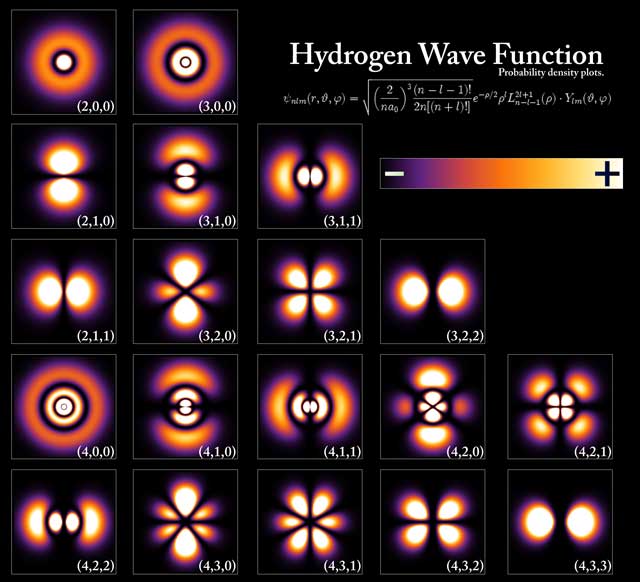Ultimately the story surrounding the bomb holds many lessons in regards to history, physics, science, military policy, and more. The point isn’t to make judgement calls or come to simple conclusions, rather, it simply reminds us of our humanity and that with great power comes great responsibility.
Scientists Thought the First Atom Bomb Might Destroy the World fact

Did the Scientists Who Developed the Bombs Dropped on Hiroshima and Nagasaki Think the Atomic Bomb Might Destroy the World, or At Least New Mexico?
When the plutonium bomb to be dropped on Nagasaki was tested, the Manhattan Project scientists made a bet on whether or not it would destroy the world. Although the idea that the bomb would cause a chain reaction of explosions in the atmosphere was close to being debunked by the time the first tests were done, not everyone was convinced. The bet was a way to ease the general tension the scientists working on the Atom Bomb felt. We explore the facts and myths behind this story below.[1][2]
The Manhattan Project.The Bet on Whether or Not the Atom Bomb Would Destroy the World
Enrico Fermi offered wagers on “whether or not the bomb would ignite the atmosphere and cause a chain reaction, and if so, whether it would merely destroy New Mexico or destroy the world.”[3] Some of the scientists at Los Alamos, including J. Robert Oppenheimer, thought the bomb might not work at all. In the end, both Fermi and Oppenheimer were both off on their predictions. Not all the scientists working on the project thought a chain reaction would occur. After all, reports like the one below suggested the chain reaction wouldn’t happen, and it didn’t. Some scientists thought that it might happen; this scenario had been brought up, studied, and debated. We can verify our information by examining the unclassified document below.[4][5]
TIP: Check out proof of the claim here.
“During the Trinity test, Enrico Fermi recalled Teller’s idea of igniting the atmosphere. In an attempt to relieve some tension, he started taking bets on whether the test would destroy the world, or merely blow up parts of New Mexico. Development of a fusion bomb began after the war. Soon the notion of igniting the atmosphere surfaced once again. Only this time the concern was that a thermonuclear reaction might trigger the fusion of Nitrogen nuclei in the atmosphere. In 1946, Teller’s Calculations showed that the bomb was not large enough trigger a cascade, and even if it were, the physical phenomenon would disperse the energy required to sustain the reaction. He concluded the prospect was so improbable that it was considered impossible. Oppenheimer agreed.” – Read more: Debunked: Scientists risked destroying the earth during nuclear tests and CERN (TIP: This article debunks the idea that all the scientists thought there was a risk, but confirms the general story. This seems to be an accurate account).
Oppenheimer, Fermi, and Einstein Urge Roosevelt to Commence the Manhattan Project.When Was the First Bomb Tested?
The Trinity Test on July 16, 1945, was the first atom bomb test and took place at Alamogordo Bombing and Gunnery Range in New Mexico. Weapons-grade uranium was so scarce that there was only enough of it to make the single bomb that was used to bomb Hiroshima. Plutonium was slightly more available, and several plutonium bombs were made, so those were the type tested. Scientists also bet on the yield of the test, with wagers being placed for between 45,000 tons of TNT to none.[6] You can see good film footage from the History Channel in this YouTube video.[7]
The Manhattan Project Trinity Test. Color footage of soldiers being exposed to high levels of radiation.When Were Atom Bombs First Used in War?
The bombs were used just weeks after the Trinity Test. Hiroshima was bombed August 6, 1945, and Nagasaki was bombed August 9, 1945. President Truman broadcast the news of Japan’s surrender on August 14.
Atomic Bomb Dropped To Nagasaki (National Geographic Documentary).How Did the Manhattan Project Scientists Feel Later?
Many of the Scientists involved in the Manhattan Project later questioned their role in developing nuclear armaments. One of the longest-lived, Hans Albrecht Bethe, spoke at the 50th anniversary of the Hiroshima bombing saying, “I feel the most intense relief that these weapons have not been used since World War II.”[8]
World’s First Atomic Bomb – Manhattan Project Documentary – Films.- THE TRINITY TEST (Trinity Test Site, July 16, 1945)
- Atomic bomb chain reaction “might not stop?”
- U.S. Department of Energy, The Manhattan Project
- Debunked: Scientists risked destroying the earth during nuclear tests and CERN
- The Truth About Atomic And Hydrogen Bombs
- Trinity Atomic Web site
- The Manhattan Project Trinity Test
- Today in Science History
Interesting side story, it wasn’t always common knowledge that fallout was as dangerous as it is. See this story of the 5 men who stood under an atomic bomb test: Five Men Agree To Stand Directly Under An Exploding Nuclear Bomb.
